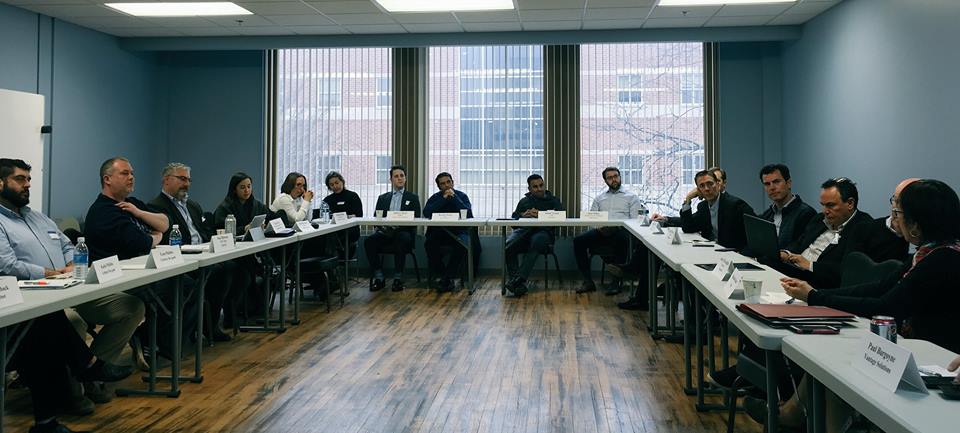WASHINGTON – Working rent-free from his family’s welding shop in Youngstown, Ohio, Zac DiVencenzo, a young entrepreneur and self-proclaimed “nerd,” toiled over his startup’s 3D printing technology surrounded by the same equipment his grandfather used to fabricate and fold metals in the 1970’s.
Nearly half a century later, DiVencenzo created his JuggerBot 3D startup in 2014, after deciding to stay home and help revitalize his hometown.
“Never crossed my mind,” to leave, he said.
The Youngstown native and third generation welder is part of a burgeoning movement of tech-focused jobs, including those in 3D printing development—also known as “additive manufacturing.” The movement is creating new jobs with diverse skill levels in a Midwestern city derisively considered by some to be stuck in the past.
“We are growing from the Rust Belt to the ‘Tech Belt’,” DiVencenzo said.
Industrial Midwestern cities such as Youngstown, South Bend, Flint, Detroit and Akron, were hard hit in recent years by the Great Recession’s downturn in traditional manufacturing, which caused massive unemployment in the sector. Jobs in motor vehicle manufacturing, for example, fell by nearly fifty percent in 2009 compared to its peak in 2000, according to the Bureau of Labor Statistics.
Now, a team of entrepreneurs, politicians and Silicon Valley investors are on a mission to restore those cities and industries with big venture capital money; new, cutting-edge technology; and local talent motivated to take risks and innovate.
The “Valley to Valley” group began working together after the 2016 presidential election sparked a national conversation about the lack of attention paid to “flyover” states.
The election served as a catalyst to connect Silicon Valley investors with industrial innovators, explained Patrick McKenna, a serial entrepreneur and venture capitalist who is participating in the effort.
“There’s a crisis and an urgency,” he said. “The modern technology economy needs to work for more people and more places.”
The struggle is real. Total Silicon Valley venture investment in Illinois, Indiana, Michigan, Minnesota, Ohio and Wisconsin has declined each of the past three years, reaching just eight percent in 2017, according to figures from PitchBook, a financial data company.
In response, the group ramped up its efforts this March with a “Comeback Cities Tour” that bussed a dozen Silicon Valley investors to the five Rust Belt cities to foster long-term relationships between the investors and local tech talent.
Startups such as JuggerBot 3D, housed in the Youngstown Business Incubator, illustrate how sophisticated technology can be combined with the “know-how of traditional manufacturing,” said Rep. Ro Khanna, D-Calif, who represents Silicon Valley.
“We need places where people can get two to three year degrees with skills specific to the local economy with a tech component,” Khanna said.
Technology and manufacturing should work together, not separately, according to South Bend Mayor Pete Buttigieg, who has seen the transformation first hand.
“The idea of a fork in the road [where] you can either do tech or manufacturing really misjudges the dynamics,” he said.
“The truth is that manufacturing is becoming an increasingly technological industry, [which] means we need workers who are capable of dealing with advanced processes of equipment whether they’re at the engineering level or whether they’re on the shop floor.”
South Bend is no stranger to the romanticism of manufacturing’s glory days. The roughly 100,000-person city is home to the former Studebaker car factory that was once the world’s largest wagon maker and employed up to 7,000 people. Today, 140 acres of the former Studebaker site have been transformed into Ignition Park, a future home to a growing number of technology businesses.
Akron native Doug Weintraub, the CEO of Akron’s Bounce, an innovation hub, said he’s also witnessed dramatic changes. His city, which is still home to the Goodyear Tire and Rubber Company, was once considered the rubber capital of the world before B. F. Goodrich, Firestone and General Tire closed their plants in the 1980s.
Today, Bounce is located within the city’s historic B.F. Goodrich building. Just like the rubber that was manufactured there for a century, the space itself is now flexible: newly-certified welders work feet away from entrepreneurs developing augmented reality technology for tires.
“At the same time we’re teaching welders, we’re teaching people how to code software,” Weintraub said.
This year’s Comeback Cities Tour is just the start, according Rep. Dan Kildee, D-Mich., a Flint native. He said the tour was an “exciting” reminder that “what built these older industrial communities in the first place was innovation and entrepreneurship…there’s nothing that says we can’t do it again.”


